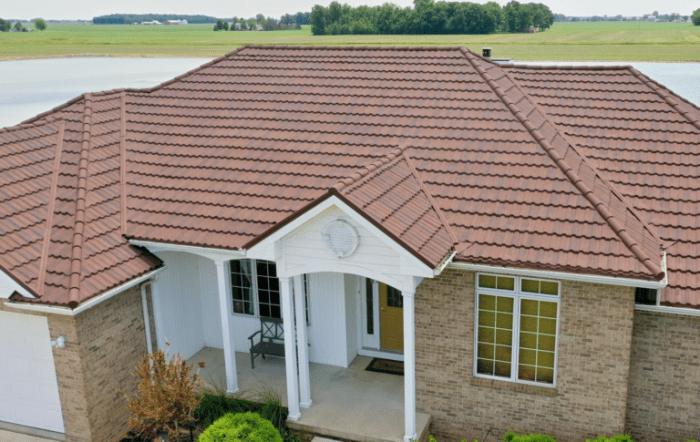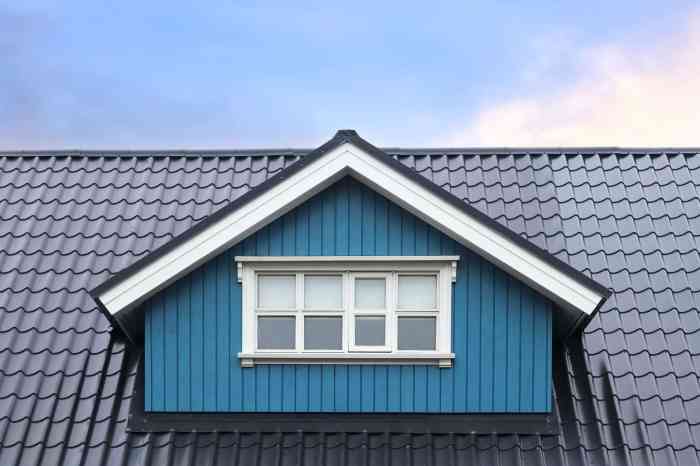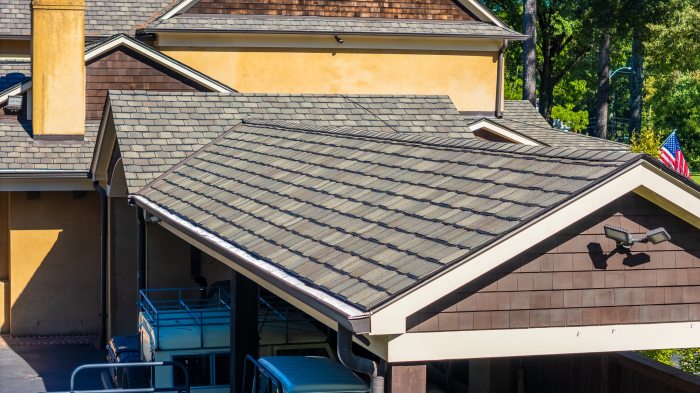
Weather-Resistant Roofing by Erie Roofing sets the stage for this enthralling narrative, offering readers a glimpse into a story that is rich in detail and brimming with originality from the outset. In a world where the elements can wreak havoc on our homes, having a strong and weather-resistant roof is crucial to safeguarding our haven.
Let's dive into the world of weather-resistant roofing and explore the benefits, materials, installation process, and maintenance tips that Erie Roofing has to offer.
Benefits of Weather-Resistant Roofing
Weather-resistant roofing is crucial for protecting your home from the elements and ensuring its longevity. By investing in weather-resistant roofing materials, you can enjoy a range of benefits that go beyond just keeping the rain out.
Protection from Harsh Weather Conditions
- Weather-resistant roofing can withstand extreme weather conditions such as heavy rain, strong winds, hailstorms, and snow without sustaining damage.
- It helps prevent water leaks, mold growth, and structural damage that can occur due to exposure to moisture.
- By providing a strong barrier against the elements, weather-resistant roofing can keep your home safe and secure in any weather.
Increased Durability
- Weather-resistant roofing materials are designed to be more durable and long-lasting than traditional roofing materials.
- They are resistant to fading, warping, cracking, and other types of damage that can occur over time due to exposure to the sun and weather.
- With weather-resistant roofing, you can expect your roof to last longer and require fewer repairs, saving you time and money in the long run.
Types of Weather-Resistant Roofing Materials

When it comes to weather-resistant roofing, various materials are commonly used to ensure durability and protection against the elements. Each material has its own set of features, pros, and cons that make it suitable for different situations. Let's explore some of the most popular weather-resistant roofing materials:
1. Asphalt Shingles
Asphalt shingles are one of the most common roofing materials used in residential properties. They are cost-effective, easy to install, and come in a variety of colors and styles. However, they may not be as durable as other materials and can be prone to damage in extreme weather conditions.
2. Metal Roofing
Metal roofing is known for its longevity and durability, making it an excellent choice for weather-resistant roofing. It can withstand harsh weather conditions, including heavy rain, strong winds, and snow. Additionally, metal roofing is energy-efficient and environmentally friendly. On the downside, metal roofing can be more expensive upfront compared to other materials.
3. Clay Tiles
Clay tiles are a popular option for weather-resistant roofing due to their durability and ability to withstand extreme temperatures. They are resistant to fire, rot, and insects, making them a low-maintenance choice for homeowners. However, clay tiles can be heavy, requiring additional structural support, and they may be more prone to breakage in hailstorms.
4. Slate Roofing
Slate roofing is a high-end option known for its elegance and longevity. It is fire-resistant, waterproof, and can last for up to 100 years with proper maintenance. However, slate roofing is one of the most expensive roofing materials available, making it less accessible for many homeowners.
5. Synthetic Roofing Materials
Synthetic roofing materials, such as rubber or plastic composites, are becoming increasingly popular for their durability and versatility. They can mimic the look of natural materials like wood or slate while providing superior weather resistance. Synthetic roofing materials are also lightweight and easy to install, making them a practical choice for many homeowners.Overall, the choice of weather-resistant roofing material will depend on factors such as budget, climate, and aesthetic preferences.
It's essential to weigh the pros and cons of each material carefully before making a decision to ensure that your roof can withstand the elements for years to come.
Installation Process for Weather-Resistant Roofing

When it comes to installing weather-resistant roofing, the process involves several crucial steps to ensure the roof can withstand various weather conditions and protect the building underneath. Proper installation is key to maximizing the effectiveness of weather-resistant roofing materials and increasing the longevity of the roof.
Preparation and Inspection
- Before installation begins, the existing roof should be thoroughly inspected to identify any damage or issues that need to be addressed.
- Old roofing materials should be removed, and the roof deck should be inspected and repaired as needed to provide a solid foundation for the new weather-resistant roofing.
Installation of Weather-Resistant Materials
- The next step involves installing the weather-resistant roofing materials, such as asphalt shingles, metal roofing, or tile roofing, according to the manufacturer's guidelines and local building codes.
- Proper installation techniques, including sealing edges, overlaps, and penetrations, are crucial to prevent water infiltration and ensure the roof remains weather-resistant.
Flashing and Sealants
- Flashing, sealants, and underlayment play a vital role in weather-resistant roofing by providing additional protection against water intrusion at vulnerable areas like roof valleys, chimneys, and skylights.
- Sealants should be applied correctly to create a watertight seal and prevent leaks that can compromise the roof's weather resistance.
Quality Control and Final Inspection
- After the installation is complete, a thorough quality control check should be conducted to ensure all components are properly installed and the roof meets industry standards for weather resistance.
- A final inspection should be performed to verify that the weather-resistant roof is ready to withstand various weather conditions and protect the building for years to come.
Importance of Proper Installation
Proper installation of weather-resistant roofing is crucial for ensuring the roof performs as intended and provides long-lasting protection against the elements. By following manufacturer guidelines and industry best practices during installation, the roof can maintain its weather resistance and durability over time.
Challenges Faced During Installation
- Weather conditions can pose challenges during installation, such as rain or high winds, which can affect the quality of the installation and compromise the weather resistance of the roof.
- Complex roof designs, including steep slopes or intricate architectural features, can make installation more challenging and require specialized techniques to ensure proper weather resistance.
Maintenance Tips for Weather-Resistant Roofing

Regular maintenance is crucial for ensuring the longevity and effectiveness of weather-resistant roofing. By following a maintenance schedule and implementing proper techniques, you can enhance the weather resistance of your roof.
Implement a Maintenance Schedule
- Inspect your roof at least twice a year, ideally in the spring and fall, to check for any damage or wear.
- Clear debris such as leaves, branches, and dirt from the roof to prevent water pooling and potential damage.
- Check for loose or missing shingles and promptly replace them to maintain the integrity of the roof.
- Trim overhanging branches to prevent them from rubbing against the roof and causing damage.
Techniques to Prolong Lifespan
- Clean your gutters regularly to ensure proper drainage and prevent water damage to the roof.
- Apply a roof coating to provide an extra layer of protection against the elements and extend the lifespan of the roof.
- Address any leaks or water damage immediately to prevent further deterioration of the roof.
Enhancing Weather Resistance
- Regular maintenance helps identify and address small issues before they escalate into larger problems, improving the overall weather resistance of the roof.
- By keeping the roof in top condition through regular inspections and repairs, you can ensure that it can withstand harsh weather conditions effectively.
- Proactive maintenance not only enhances weather resistance but also helps in preserving the aesthetic appeal and structural integrity of the roof.
Final Review
As we conclude this exploration of Weather-Resistant Roofing by Erie Roofing, it's evident that investing in a durable and weather-resistant roof is a wise decision for any homeowner looking to protect their investment. With top-notch materials, expert installation, and regular maintenance, Erie Roofing ensures that your roof stands strong against the toughest of weather conditions.
Trust Erie Roofing to shield your home with quality and reliability, ensuring peace of mind for years to come.
User Queries
How important is weather-resistant roofing?
Weather-resistant roofing is crucial as it protects your home from harsh weather elements such as rain, wind, snow, and UV rays, ensuring the longevity of your roof and the safety of your property.
What are the common types of weather-resistant roofing materials used by Erie Roofing?
Erie Roofing offers a variety of weather-resistant roofing materials including asphalt shingles, metal roofing, and clay tiles, each with their unique features and benefits.
How can regular maintenance enhance the weather resistance of a roof?
Regular maintenance such as inspections, cleaning, and repairs can help identify and address any issues early on, preventing potential damage and ensuring the weather resistance of your roof.












